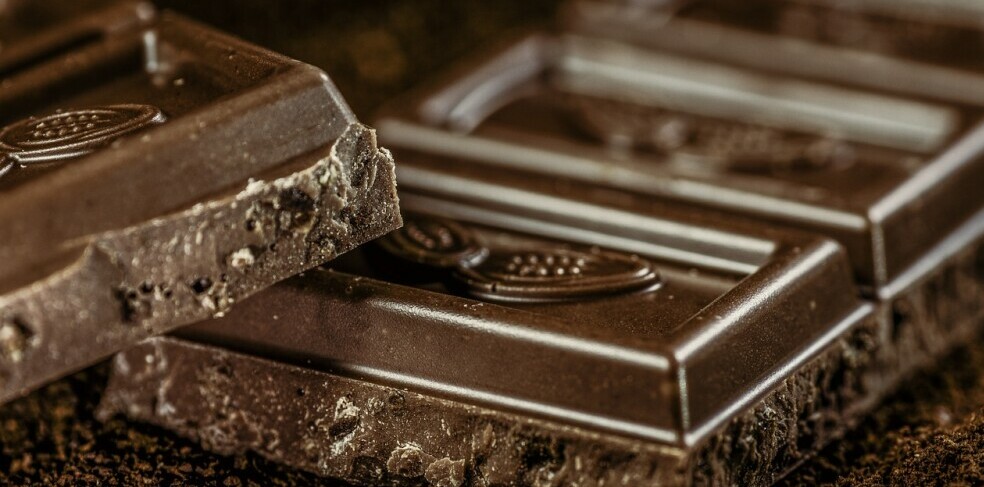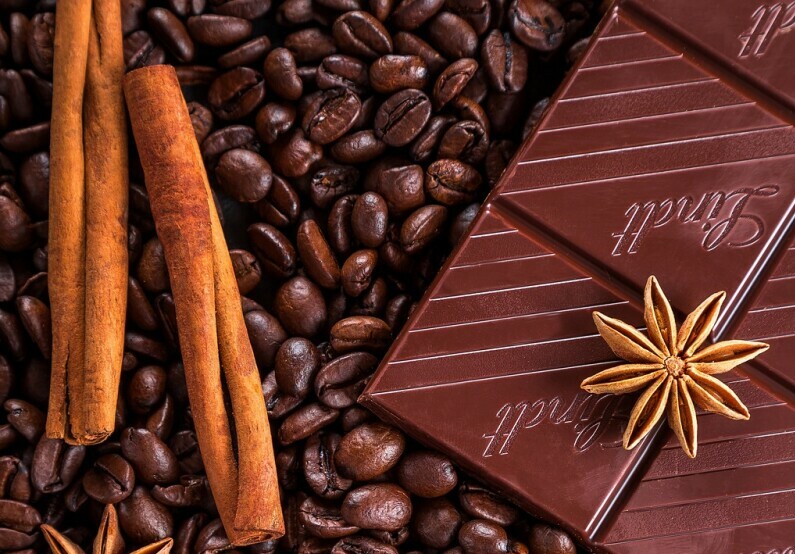
I understand that many people enjoy indulging in chocolate, but when it comes to health, not all chocolates are created equal. In fact, dark chocolate stands out as a potential ally for your well-being. It’s the richer, less sweet relative of milk and white chocolate, and it’s packed with nutrients that could benefit your health.

Dark chocolate is distinguished by its high cocoa content. This is the primary factor that determines the health benefits you can reap from a chocolate bar. Often, a percentage is listed on the packaging, with numbers like 70%, 85%, even 90% or more. That percentage reflects the amount of cocoa solids in the chocolate, which include the cocoa butter and cocoa mass.
The key nutrients found in dark chocolate include minerals like iron, magnesium, copper, and manganese, along with fiber and small amounts of protein. These elements contribute to the functioning of your heart, muscles, and nervous system. Notably, dark chocolate is also rich in flavonoids, a type of antioxidant that helps to protect your cells from damage.
Despite its nutrient content, you might be wary of including dark chocolate in your snacking regimen due to concerns about weight gain. It’s true that chocolate can be calorie-dense, but like many foods, the key lies in moderation and understanding how it fits into your overall diet.
At this point, you may be considering how to incorporate dark chocolate into a healthy snack diet, which I’ll explore in the next section. You’ll see that with a bit of planning, dark chocolate doesn’t have to be a guilty pleasure—it can be a delightful and healthful treat.
Incorporating Dark Chocolate into Your Snack Diet
I’m going to share with you some great tips on how dark chocolate can be more than an occasional treat.
A balanced diet can indeed include the rich taste of dark chocolate. I recommend looking for ones with higher cocoa content which these generally contain less sugar and more of the good stuff.
The need for portion control cannot be overemphasized. It’s all about moderation.
Including a small square of dark chocolate in your day can halt those sugar cravings without the guilt.
If you are thinking about creative ways to add this treat to your snacks, consider pairing dark chocolate with nuts for a quick energy boost or sprinkle some over Greek yogurt for a delightful twist.
Integrating dark chocolate with fruits like strawberries or bananas can elevate your snack time while adding nutritional value.
Health Advantages of Adding Dark Chocolate to Your Diet
When I bring up dark chocolate in conversations on healthy diets, some people are pleasantly surprised. It’s not every day you hear that something as indulgent as chocolate can be beneficial for your health. But science backs this up — dark chocolate isn’t just good, it’s great for several reasons, especially when consumed in moderation.
One of the most well-documented benefits of dark chocolate is its positive impact on cardiovascular health. Flavanols, the compounds found in cocoa, have been shown to lower blood pressure and improve blood flow to the heart and brain. They also make platelets less sticky, potentially reducing the risk of blood clots and stroke.
Another benefit hits close to the brain. Some studies suggest that the flavonoids in dark chocolate might enhance cognitive functions by improving blood flow to the brain. Not to mention, dark chocolate contains stimulants like caffeine and theobromine, which could temporarily sharpen your focus and alertness.
Mood enhancement is another reason to reach for a square of dark chocolate. It contains phenylethylamine (PEA), the same chemical your brain creates when you feel like you’re falling in love. PEA encourages the brain to release endorphins, so eating dark chocolate can actually make you happier. It’s important, however, not to rely on dark chocolate as a mood stabilizer but as a supplement to a well-rounded diet.
Finally, there’s evidence suggesting dark chocolate can play a role in managing type 2 diabetes risk. High-quality dark chocolate with high cocoa content has been linked to improved insulin sensitivity. That said, moderation is key, as excessive sugar intake can offset these potential benefits.
Making Informed Choices: Selecting the Best Dark Chocolate
When I reach for dark chocolate, I make sure it’s not just any bar off the shelf. I look for the details that make a difference in quality and impact.

Reading the label is my first step to understanding what I’m about to enjoy. I watch out for the cocoa content; I aim for options with at least 70% cocoa for the full health perks. The list of ingredients should be short and sweet, with cocoa taking center stage, and minimal added sugars or unknown additives.
The process behind creating that bar of dark chocolate can also influence its health benefits. Minimal processing is ideal, as it tends to preserve more of the cocoa’s natural goodness. I check for non-alkalized or less processed products, as these typically maintain a higher level of flavonoids.
My choice of dark chocolate extends beyond taste and health; it involves a conscious decision about the kind of practices I support. I consider chocolate brands that prioritize fair trade and sustainable sourcing of cocoa. These practices ensure farmers get a fair wage, and sustainable farming techniques are used, which is good for both people and the planet.
Lastly, recommendations can point you towards trusted brands. I do my homework, seeking reviews, and trust brands that have a reputation for quality and ethical practices. By making these informed choices, I can indulge in dark chocolate that’s delicious and in line with my values.
Kindly feel free to share some of your experiences about having dark chocolate as a delicious and healthy snack. What impact you noticed on your health improvement and any positive differences you had compared with other snacks.
Also, do not forget to share other comments and any questions you may have in the comment section. Till I come your way again. Remain healthy and stay fit. Shalom!

Hey, stumbled upon your piece on dark chocolate as a healthy snack, and I gotta say, it’s a real eye-opener! I’ve always had a sweet tooth, but now I’m feeling less guilty about reaching for those dark chocolate squares. Your breakdown of the health benefits—antioxidants, mood-boosting properties, even potential weight management—totally sold me on making the switch from milk chocolate. Plus, the idea of satisfying cravings while still getting a nutritional boost? Sign me up!
I was intrigued by your mention of cocoa percentages and their impact on health benefits. Does a higher percentage always mean better, or is there a sweet spot (pun intended) to aim for? Also, I’m curious about your thoughts on incorporating dark chocolate into recipes beyond just snacking. Any favorite recipes or creative ways to incorporate it into meals or desserts? Keep up the awesome work—I’m officially a dark chocolate convert thanks to your insights! 🍫😊
Hey Bob! I’m thrilled to hear that you enjoyed my piece on ‘The Role of Dark Chocolate In A Healthy Snack Diet,’ and that it’s inspired you to embrace this delicious and surprisingly healthy treat!
Regarding cocoa percentages, it’s definitely an interesting topic. Generally, a higher cocoa percentage means more potential health benefits due to increased levels of antioxidants and lower sugar content. However, taste preferences can vary widely. For most people, a cocoa percentage between 70-85% strikes a good balance between health benefits and taste. This range tends to offer a rich chocolate flavor without being overly bitter.
As for incorporating dark chocolate into recipes beyond snacking, the possibilities are endless! One of my favorite ways to use dark chocolate is in baking. You can add chopped dark chocolate to cookies, brownies, or muffins for an intense chocolate flavor. It also melts beautifully for dipping fruits like strawberries or bananas. Another creative idea is using melted dark chocolate as a drizzle over yogurt, oatmeal, or even on top of a warm slice of toast with nut butter.
For a savory twist, dark chocolate can be used in chili or mole sauces to add depth and richness. It pairs surprisingly well with spices like chili powder and cinnamon.
I’m delighted that you’re now part of the dark chocolate fan club! Feel free to experiment with different cocoa percentages and recipes to find what suits your taste buds best. And if you come across any exciting chocolate discoveries, I’d love to hear about them. Enjoy your dark chocolate journey! 🍫😊